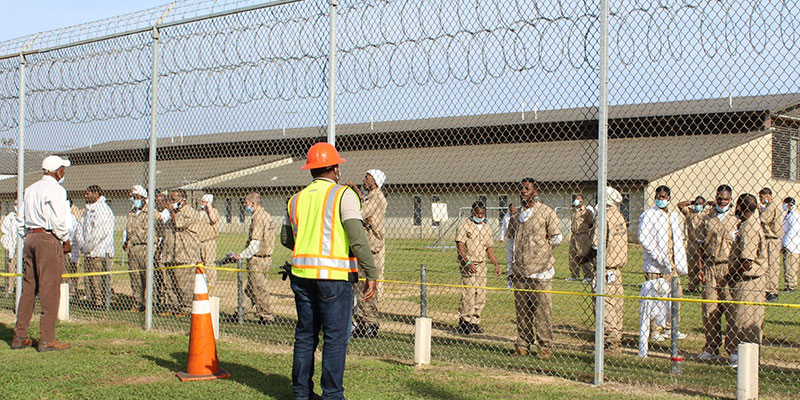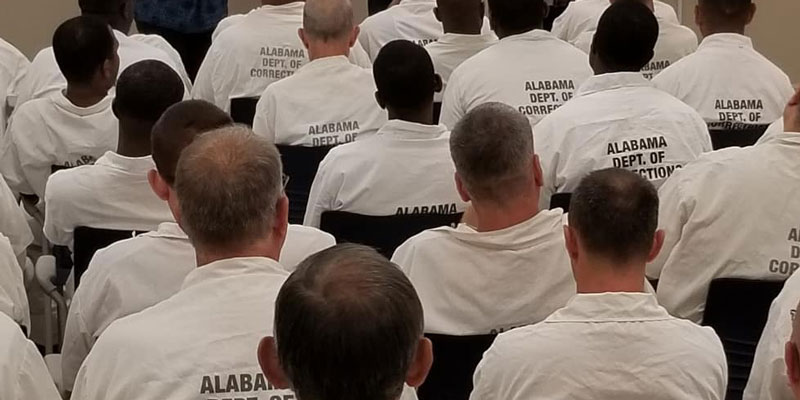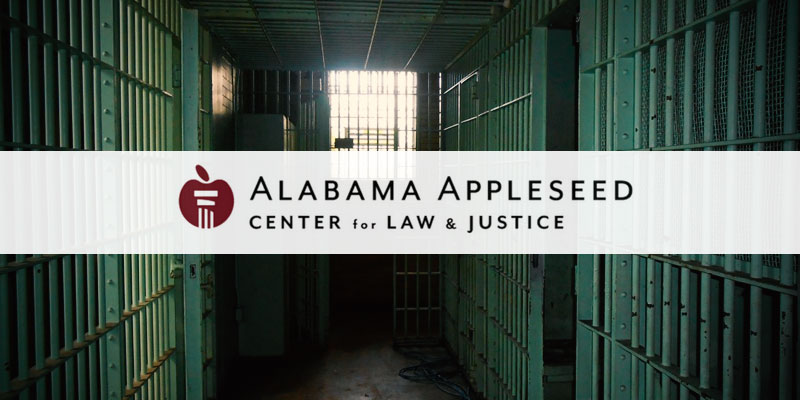Something just short of miraculous is happening in Alabama’s prisons. The number of incarcerated young people has been cut in half since 2005. Buried within statistical reports on the Alabama Department of Corrections, the numbers are clear: In 2005, prisons housed 9,827 people ages 15 to 30, or 36% of the ADOC population. By March 2021, that number was 4,537, or 18%. That this decline has impacted people ages 15 to 30, by all counts the age groups most likely to be arrested, is jaw-dropping.
These dramatic declines are largely the result of the Alabama Legislature passing significant sentencing reforms in 2006, 2013 and 2015. The new laws are working. Fewer young people are sent to prison, sentences are shorter, the Habitual Felony Offender Act is used less.
And crime is down.
According to crime.alabama.gov, a collaborative effort between the Alabama Law Enforcement Agency and the Institute of Business Analytics at the University of Alabama’s Culverhouse College of Business, Alabama’s overall crime rate declined by 17% from 2005 to 2019, the most recent year data is available. Robbery, the most common violent crime, sunk by 48%.
Let that sink in: Alabama cut incarceration in half for the age cohort most likely to be involved in criminal activity and crime fell.
The specter of expensive new prison buildings dominates discussions about responses to the U.S. Department of Justice lawsuit against the State over unconstitutional prison conditions. But as elected leaders from across the political spectrum have acknowledged, Alabama cannot build its way out of the prison crisis.
Also, let’s remember what the U.S. Department of Justice stated in its 2019 report: “[W]hile new facilities might cure some of these physical plant issues, it is important to note that new facilities alone will not resolve the contributing factors to the overall unconstitutional condition of ADOC prisons, such as understaffing, culture, management deficiencies, corruption, policies, training, non-existent investigations, violence, illicit drugs, and sexual abuse. And new facilities would quickly fall into a state of disrepair if prisoners are unsupervised and largely left to their own devices, as is currently the case.”
So, what might a solution look like that relied on data and evidence rather than the emotional politics of fear? How might Alabama move beyond its outdated “tough on crime” mentality and again be “smart on crime” as occurred in 2006, 2013, and 2015? What if we trusted the evidence produced by our own law enforcement agency? We have tools to mitigate this crisis at our disposal — and we have already begun to use them, with great effect.
Based on the trends cited above, solutions are within reach – smart, conservative solutions that will not waste scarce tax dollars. No compassion is even necessary, though it never hurts. Folks who feel people who do the crime should do the time need not worry. All that’s necessary is that we bring “the time” in line with what evidence tells us is already working.
First, though the numbers of incarcerated young people are at 20-year lows, the numbers of incarcerated older people, ages 51 and above, are at record highs. There are now 6,190 prisoners in this older demographic, a 115% increase since 2005. Alabama’s unconstitutional prisons are quickly becoming unconstitutional nursing homes.
If you’re wondering how you missed Alabama’s senior crime spree, worry not. There was not one. The Bureau of Justice Statistics has thoroughly documented how arrests peak at age 20 and drop to the lowest rates for people 50 and older.
The reason so many grandparents remain behind razor wire is that reforms that drove down the numbers of people entering prison are not retroactive. Therefore, we punish our elders more harshly than any other age group. They are stuck with life sentences at vastly disproportionate rates.
This is unfair and expensive.
Chief among the culprits for the Alabama Department of Corrections’ soaring budget is health care costs, which will only continue to grow. Between the aging population and the federal Braggs v. Dunn litigation over unconstitutional mental health care in the prisons, future prison expenditures must take into account enormous, expensive needs of these fragile populations. Otherwise, our state can expect the endless cycle of federal lawsuits and receiverships that began in the 1970s to continue.
“Prison has become an old folks’ home and a mental institution,” according to Ronald McKeithen. He should know, having spent 37 years incarcerated for a convenience store robbery with no injuries.
Mr. McKeithen is home now, after the victims, Jefferson County District Attorney Danny Carr, and Circuit Judge Shanta Owens recognized constitutional concerns as to the injustice of his sentence. Six months after release, he is employed at a drug treatment facility, a licensed driver, and a registered voter. At 59, he’s applied to become a Certified Recovery Support Specialist so he can use his experiences to help others overcome drug problems.
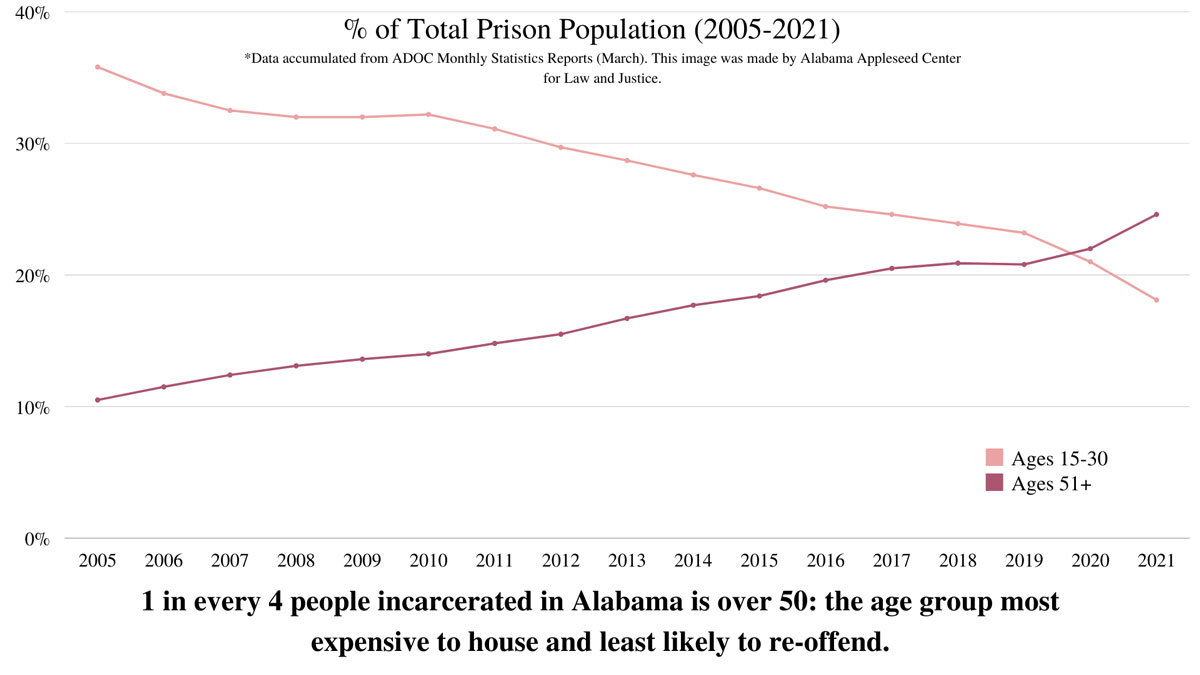
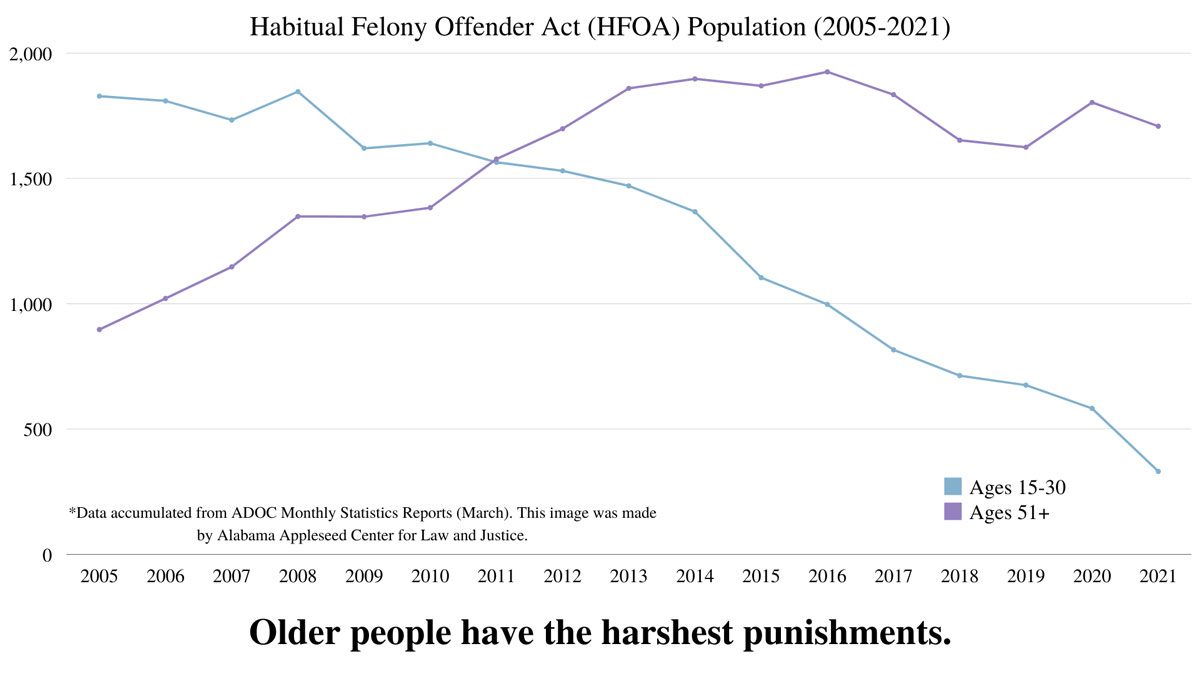
Mr. McKeithen is not an anomaly. Alvin Kennard spent 36 years in prison for a $50 robbery at a bakery before Bessemer Judge David Carpenter and District Attorney Lynneice Washington agreed he deserved freedom and ended his life without parole sentence in 2019. Mr. Kennard, 60, now works repairing damaged cars at a Ford dealership. His bosses have requested more workers like him.
Alabama needs workers, not prisons filled with old people.
Yet when additional reforms arise that would give more elders a chance – not a guarantee, just an opportunity – for the very same sentences now available to 20-year-olds, opponents invoke the most sensational of crimes. Alabama Sentencing Commission data tell a different story about who would be eligible to petition for a second chance if lawmakers passed sensible reforms. More people are serving enhanced sentences under the HFOA for robbery – 1,029 people – than for rape, kidnapping, child sex abuse and sodomy combined. Also, most robbery convictions do not involve physical injuries.
Alabama has a chance to respond to the prison crisis and the looming federal intervention with integrity, evidence, and truth. With hope rather than hype. Our lawmakers made bold decisions when they passed the previously mentioned reforms in 2006, 2013 and 2015. Fewer people went to prison. Crime dropped. We could multiply those promising results by making these reforms available retroactively in cases where resentencing would not be detrimental to public safety. We could create justice for our elders.
This would free up dollars that otherwise will be spent on very secure nursing facilities for elderly prisoners for use in crime prevention, drug treatment, and prisoner re-entry.
Looming decisions about prison construction and criminal justice policy will affect Alabama for generations. Let’s build on the success of 16 years of sentencing reforms rather than take the easy – and very expensive way out – and just build more prisons.
Carla Crowder J.D., is executive director of Alabama Appleseed Center for Law & Justice, a nonprofit, nonpartisan research and advocacy organization based in Montgomery.









